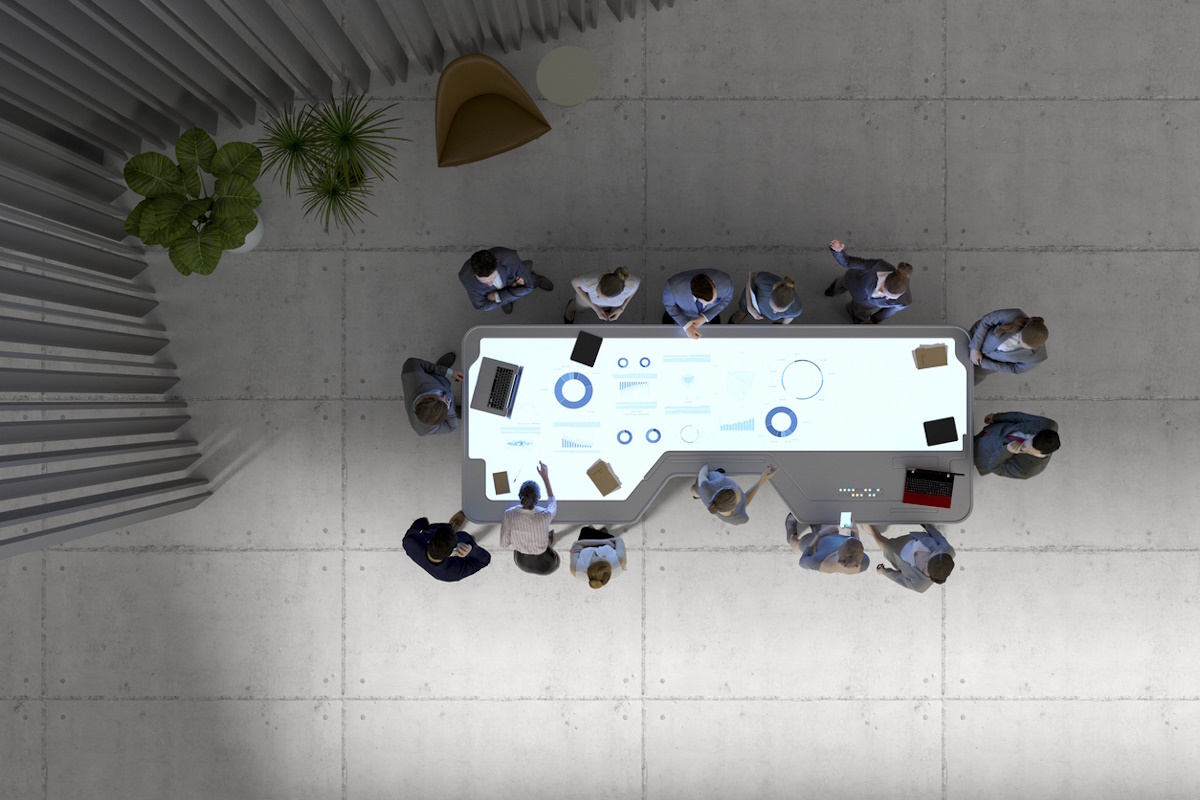Creating inclusive workspaces with AI

Lee Gatland at Cisilion explains how smart technology and AI are creating more inclusive and efficient workspaces
There is a lot of hype around AI. It seems it can be applied to anything; you only have to look at the latest offerings at the CES conference, where the tech industry’s sharpest minds took to the stage to unveil their latest releases and boldest breakthroughs, to find anything with a plug must be seen to be AI-enabled. Some may have a purpose; some are inventing that purpose, and others are plainly not AI.
However, technology and AI have a place in driving good, and one area is creating an inclusive and energy-efficient workspace. Smart conferencing technologies utilising embedded AI can create inclusive meeting experiences. Intelligent networks acting as sensors and IOT enable platforms to analyse this information.
Together these technologies can enable a workspace that is right for the people using the space, driving efficiencies and delivering tangible ESG results.
It starts with how we use our spaces. How do we use our meeting rooms? How do we use our huddle spaces and our breakout areas? Deploying the right technologies into these spaces enables us to deliver an exceptional user experience, while capturing telemetry on the space, both environmental data (temperature, air quality, humidity, etc) and occupancy statistics.
The user experience is paramount; it needs to be inclusive. Using AI embedded in the solutions and delivered via the cloud, we can ensure that regardless of where a user is located, or how many people are in the meeting room, each person has a similar experience.
Recognition of the people in the room and splitting the room into individual segments to enable each person to be at the same eye level, both in the room and remotely, ensures that each user feels involved. Intelligent speaker tracking and background noise removal for all participants ensures that each user is actively involved and included in the meeting.
The same smart capabilities that improve the meeting experience are also then used to drive better use of the space. Augmented by sensors within the network, intelligent cameras and traditional IOT sensors capture and stream information into a single platform for analysis and visualisation. This enables organisations to make informed and increasingly automated decisions on their office spaces.
The level of insight these data sources can provide is phenomenal. For example, using footfall data generated from the wireless network, combined with visual people counting from CCTV cameras and meeting room solutions, we can build an accurate picture not just of how busy an office is, but also patterns on the office usage. This can be based both on time/day and location data within an office, down to desk level. This allows us to predict future office use, enabling us to automate how a building is used on individual days.
We can instruct signage to send people to locations, target cleaning activities, and instruct building management systems to shut down areas of the building based on anticipated use. We can also react and bring back online areas of a building required quickly, ensuring it responds in real-time to how it is being used.
This data is not just for control. It also enables us to make informed decisions on how we work. Presenting this information back to users through portals and interactive displays allows them to make their own choice on which of the available meeting rooms to use, based on air quality and temperature.
They can also decide which floor or office space is best suited for the task at hand, i.e. quiet locations for focused tasks, or areas where there is an increase in user population to facilitate better collaboration.
We can extend this further by moving more of the building infrastructure to be powered over ethernet (PoE), where we deliver low-voltage DC power via the network cabling powered by the network switches and provide more granular control.
Shutting down switch ports based on the requirements of a particular space means we can keep wireless access points powered off until needed. PoE-enabled lighting can be kept powered down, and even the power to a desk can be restricted until required, with PoE-enabled monitors and docking stations now available.
Only when we identify people moving towards floors or areas within a location do we methodically power on the lighting, the networks and the desk infrastructure as required.
The benefits of powering your core building services via PoE are not just the ability to switch them off until required but also because PoE runs on low-voltage DC power. It is more efficient, so there are real energy savings during operation.
Also, the benefits begin even before you power a device on, with network cabling being cheaper to manufacture and deploy and having a lower environmental impact during manufacture. The cost and ESG benefits of PoE begin during the installation phases.
Entry into the world of smart and inclusive buildings can be quick and simple. It can be deployed in building blocks using infrastructure already in place.
If an organisation is already a user of either Cisco or Meraki wireless infrastructures or Cisco Webex room solutions, you can enable the smart sensors and start feeding this information into platforms like Cisco Spaces to immediately gain visibility and actionable insights into how the space is being used.
This can quickly be augmented with the addition of other sensors from either Meraki or other IOT sensor providers to deliver an accurate picture of a space, with actions based on events easily triggered via API, etc.
Smart technology and AI in workspaces and office buildings make work more effective, sustainable and inclusive. Businesses can manage their office space more effectively and create a better working environment that will encourage people to go into the office for the right reasons while also ensuring hybrid and remote workers have a more positive experience.
It is a win for employee engagement and inclusivity, as well as for sustainability.
Lee Gatland is Head of Presales at Cisilion
Main image courtesy of iStockPhoto.com

Business Reporter Team
You may also like
Most Viewed
Winston House, 3rd Floor, Units 306-309, 2-4 Dollis Park, London, N3 1HF
23-29 Hendon Lane, London, N3 1RT
020 8349 4363
© 2025, Lyonsdown Limited. Business Reporter® is a registered trademark of Lyonsdown Ltd. VAT registration number: 830519543





